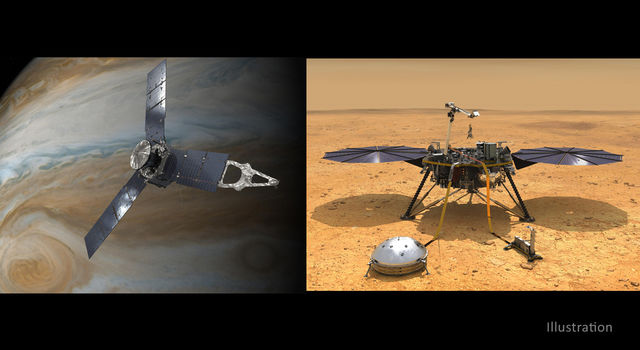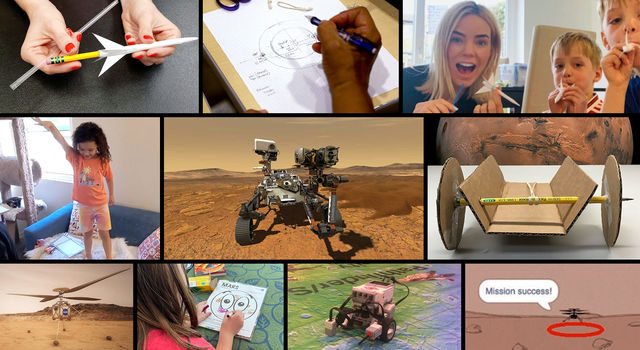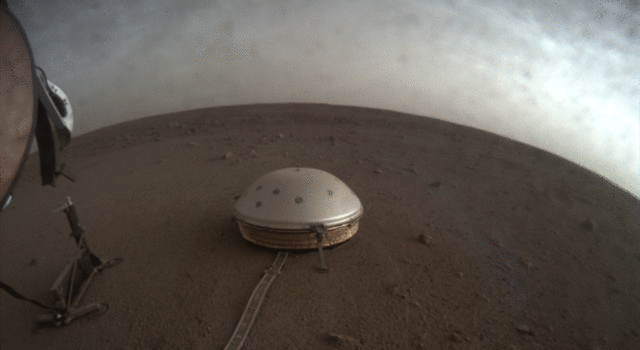Blogs | Dawn Journal | October 31, 2013
For Dawn, a Time to Thrust and a Time to Coast
Dear All Hallows' Dawns,
Deep in the main asteroid belt between Mars and Jupiter, Dawn is continuing its smooth, silent flight toward dwarf planet Ceres. Far behind it now is the giant protoplanet Vesta, which the spacecraft transformed from a tiny splotch in the night sky to an exotic and richly detailed world.
The voyage from Vesta to Ceres will take the pertinacious probe 2.5 years. The great majority of spacecraft coast most of the time (just as planets and moons do), each one following a trajectory determined principally by whatever momentum they started with (usually following release from a rocket) and the gravitational fields of the sun and other nearby, massive bodies. In contrast, Dawn spends most of its time thrusting with its ion propulsion system. The gentle but efficient push from the high velocity xenon ions gradually reshapes its orbit around the sun. In September 2012, as it departed Vesta after 14 months of scrutinizing the second most massive resident of the asteroid belt, Dawn's heliocentric orbit was the same as the rocky behemoth's. Now they are very far apart, and by early 2015, the robotic explorer's path will be close enough to Ceres's that they will become locked in a gravitational embrace.
Without ion propulsion, Dawn's unique mission to orbit two extraterrestrial destinations would be impossible. No other spacecraft has attempted such a feat. To accomplish its interplanetary journey, the spaceship has thrust more than 96 percent of the time since propelling itself away from Vesta last year. Whenever it points its ion engine in the direction needed to rendezvous with Ceres, its main antenna cannot also be aimed at Earth. Dawn functions very well on its own, however, communicating only occasionally with its terrestrial colleagues. Once every four weeks, it interrupts thrusting to rotate so it can use its 5-foot (1.52-meter) antenna to establish contact with NASA's Deep Space Network, receiving new instructions from the Dawn operations team at JPL and transmitting a comprehensive report on all its subsystems. Then it turns back to the orientation needed for thrusting and resumes its powered flight.
During its years of interplanetary travel, Dawn has reliably followed a carefully formulated flight plan from Earth past Mars to Vesta and now from Vesta to Ceres. We discussed some of the principles underlying the development of the complex itinerary in a log written when Dawn was still gravitationally anchored to Earth. To carry out its ambitious adventure, Dawn should thrust most of the time, but not all of the time. Indeed, at some times, thrusting would be unproductive.
We will not delve into the details here, but remember that Dawn is doing more than ascending the solar system hill, climbing away from the sun. More challenging than that is making its orbit match the orbit of its targets so that it does not fly past them for a brief encounter as some other missions do. Performing its intricate interplanetary choreography requires exquisite timing with the grace and delicacy of the subtly powerful ion propulsion.
Of course Dawn does not thrust much of the time it is in orbit at Vesta and Ceres; rather, its focus there is on acquiring the precious pictures and other measurements that reveal the detailed nature of these mysterious protoplanets. But even during the interplanetary flight, there are two periods in the mission in which it is preferable to coast. Sophisticated analysis is required to compute the thrusting direction and schedule, based on factors ranging from the physical characteristics of the solar system (e.g., the mass of the sun and the masses and orbits of Earth, Mars, Vesta, Ceres and myriad other bodies that tug, even weakly, on Dawn) to the capabilities of the spacecraft (e.g., electrical power available to the ion thrusters) to constraints on when mission planners will not allow thrusting (e.g., during spacecraft maintenance periods).
The first interval that interplanetary trajectory designers designated as "optimal coast" was well over four years and 1.8 billion miles (2.8 billion kilometers) ago. Dawn coasted from October 31, 2008, to June 8, 2009. During that time, the ship took some of Mars's orbital energy to help propel itself toward Vesta. (In exchange for boosting Dawn, Mars slowed down by an amount equivalent to about 1 inch, or 2.5 centimeters, in 180 million years.)
The second and final interval when coasting is better than thrusting begins next month. From Nov. 11 to Dec. 9, Dawn will glide along in its orbit around the sun without modifying it. The timing of this coast period is nearly as important to keeping the appointment with Ceres as is the timing of the thrusting. In next month's log, we will describe some of the special assignments the sophisticated robot will perform instead of its usual quiet cruise routine of accelerating and emitting xenon ions. We also will look ahead to some interesting celestial milestones and alignments in December.
While the spacecraft courses through the asteroid belt, the flight team continues refining the plans for Ceres. In logs in December and several months in 2014, we will present extensive details of those plans so that by the time Dawn begins its mission there, you will be ready to ride along and share in the experience.
In the meantime, as the stalwart ship sails on, it is propelled not only by ions but also by the promise of exciting new knowledge and the prospects of a thrilling new adventure in exploring an uncharted alien world.
Dawn is 16 million miles (26 million kilometers) from Vesta and 25 million miles (39 million kilometers) from Ceres. It is also 3.07 AU (286 million miles, or 460 million kilometers) from Earth, or 1,200 times as far as the moon and 3.10 times as far as the sun today. Radio signals, traveling at the universal limit of the speed of light, take 51 minutes to make the round trip.
Dr. Marc D. Rayman
4:00 p.m. PDT October 31, 2013
P.S. This log is posted early enough to allow time for your correspondent to don his Halloween costume. In contrast to last year's simple (yet outlandish) costume, this year's will be more complex. He is going in double costume, disguised as someone who is only pretending to be passionate about the exploration of the cosmos and the rewards of scientific insight.
TAGS:DAWN, CERES, VESTA, DWARF PLANETS, SOLAR SYSTEM, MISSION, SPACECRAFT







